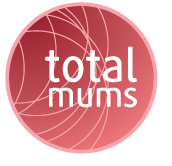By Alexandra Couling
Rectus abdominis is a paired muscle that runs vertically on each side of the abdomen. It consists of two parallel muscles separated by a connective tissue band called the linea alba. The rectus abdominis muscle is also known as your six pack.
During pregnancy your abdominal muscles stretch to accomodate the growth of your uterus, especially during the last trimester. As this occurs the right and left side of your rectus abdominis get stretched apart and a gap forms in between. Don’t stress though as this is completely normal.
However, it can lead to separation if you do not look after your body during this time of growth. If these muscles are continually used while being stretched, a diastasis rectus abdominis can occur. This is where the two rectus abdominis bellies separate with strenuous activities (eg, going from lying into sitting). In some cases you are able to see a doming down the centre of your abdomen.
A diastasis rectus abdominis can be diagnosed by a physical exam and it must be differentiated from a hernia. Some women however may not be aware that they have a diastasis rectus abdominis. This can result in them exacerbating the problem by performing activities that may make it worse, which can lead to decreased spinal and core control, lower back pain and incontinence.
No treatment for a diastasis is necessary while you are pregnant. Postnatally some small diastasis rectus abdominis can resolve spontaneously, however a larger diastasis may need physiotherapy intervention. It is recommended you get this checked by your midwife, obstetrician, GP or women’s health physiotherapist. Extreme cases may require cosmetic surgery.
Activities to avoid:
- Sit ups
- After approximately 26 weeks you should be rolling to your side to get out of bed so not to increase the strain in these muscles.
- Heavy lifting
- Over stetching your abdominals (lying backward over a swiss ball)
- Any activity that causes your abdominal wall to bulge with exertion
- use hands to help hold abdominals together with intense coughing.
Postnatally
Start with gentle walking Pelvic floor and transverse abdominis exercises prescribed by your physiotherapist If you are anxious about starting exercise again after birth, check with your women’s health physiotherapist, midwife, GP or obstetrician, as you may need some extra support such as an abdominal brace and specific exercises to encourage the rejoining of your rectus abdominis muscle.
Quick self check:
- Lying on your back, find your belly button and then place one hand approx 2cm above and one hand approx 2cm below.
- Gently press down with your fingers and lift your head and shoulders off the ground.
- Then move your fingers back and forth across your midline to find the outline of each rectus muscle belly.
- Measure with finger width how far apart from each other they are.
- The norm is 1-2 fingers width.
- If yours are further apart, ask your mid wife, GP, obstetrician or women’s health physiotherapist to check for you at your next visit.
